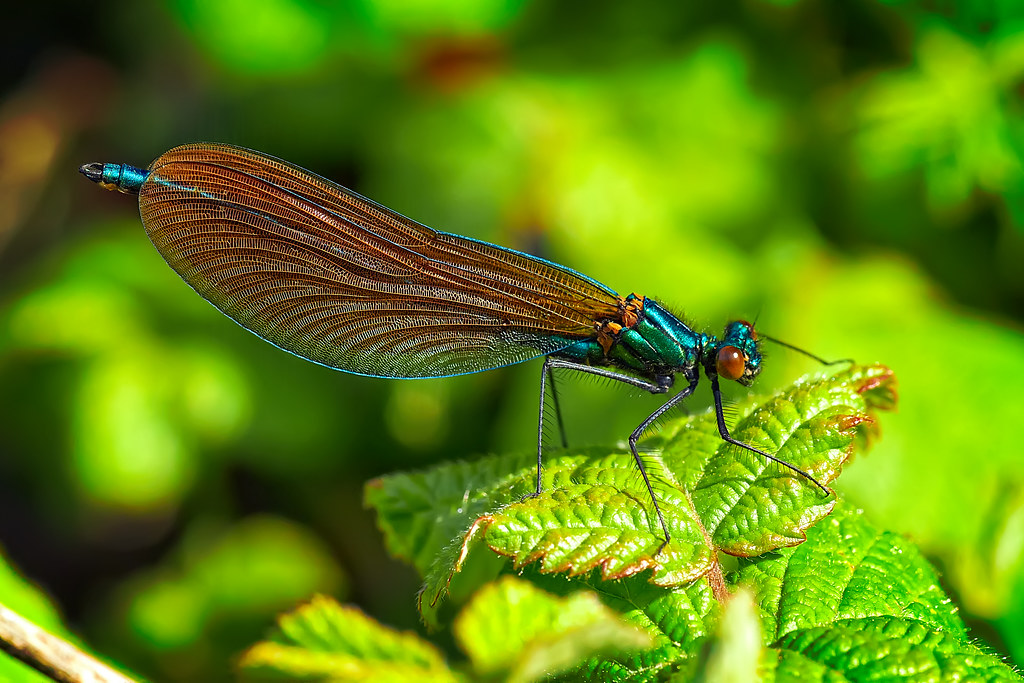RedRobin
Dances With Dogs
- Messages
- 9,314
- Name
- Robin
- Edit My Images
- Yes
The Canon EF 100mm F/2.8L IS Macro is a very well established and highly rated lens. In my experience in the field it works equally well on either full-frame, crop-sensor or mirrorless bodies and also with a Kenko 1.4x Extender (the Canon Extenders don't physically fit). As a wildlife photographer I only very rarely shoot any other subjects with this lens but realise it is useful for human portraits or similar.
I mostly shoot with the 1.4x on this lens, offering me 140mm F/5.6, hence my interest in the Irix 150mm F/2.8 Macro lens. Such focal lengths help not to spook insect subjects by being able to be further away.
But the Irix 150mm F/2.8 neither has Autofocus nor Image Stabilisation. The lack of AF is absolutely no problem because I always shoot Manual Focus for close-ups/macro as it is more accurate and especially as the mirrorless Canon EOS-R has very effective visual focussing aids (coloured peaking) in the EVF viewfinder. Image Stabilisation is more of an issue but selecting faster shutter speeds will help - This helps sharpness anyway. I have started shooting my Canon Macro with IS switched off to see how I go. I nearly always shoot Manual-mode and so have complete control of the exposure balance.
One of the very attractive features of the Irix, strangely named 'Dragonfly', macro lens is its very wide MF ring with a ridge and the ability to change its resistance tension or even lock it.
In depth reviews show that the Irix bokeh is even smoother than the Canon's. I have found a couple of reviews online but not by users in the field and no-one here on TP has mentioned Irix according to a Search.
https://www.digitalcameraworld.com/reviews/irix-150mm-f28-macro-11-dragonfly-review
https://www.ephotozine.com/article/irix-150mm-f-2-8-macro-1-1-dragonfly-review-33078
Does anyone here have any information or experience of the Irix 150mm please?
I mostly shoot with the 1.4x on this lens, offering me 140mm F/5.6, hence my interest in the Irix 150mm F/2.8 Macro lens. Such focal lengths help not to spook insect subjects by being able to be further away.
But the Irix 150mm F/2.8 neither has Autofocus nor Image Stabilisation. The lack of AF is absolutely no problem because I always shoot Manual Focus for close-ups/macro as it is more accurate and especially as the mirrorless Canon EOS-R has very effective visual focussing aids (coloured peaking) in the EVF viewfinder. Image Stabilisation is more of an issue but selecting faster shutter speeds will help - This helps sharpness anyway. I have started shooting my Canon Macro with IS switched off to see how I go. I nearly always shoot Manual-mode and so have complete control of the exposure balance.
One of the very attractive features of the Irix, strangely named 'Dragonfly', macro lens is its very wide MF ring with a ridge and the ability to change its resistance tension or even lock it.
In depth reviews show that the Irix bokeh is even smoother than the Canon's. I have found a couple of reviews online but not by users in the field and no-one here on TP has mentioned Irix according to a Search.
https://www.digitalcameraworld.com/reviews/irix-150mm-f28-macro-11-dragonfly-review
https://www.ephotozine.com/article/irix-150mm-f-2-8-macro-1-1-dragonfly-review-33078
Does anyone here have any information or experience of the Irix 150mm please?
Last edited:


 BEAUTIFUL DEMOISELLE
BEAUTIFUL DEMOISELLE